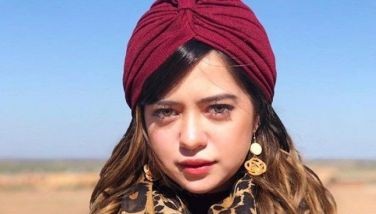Jiggy’s close encounter with Yolanda
MANILA, Philippines - Covering Typhoon Yolanda could easily be the toughest day in Jiggy Manicad’s assignment notebook. In fact, it must have felt like the longest day in his life as the Kapuso news reporter and anchor had to wade through debris-filled roads to find a way to communicate outside the severely hit Leyte.
This is the thrust of the documen- tary titled Six Hours: Surviving Typhoon Yolanda produced by the US-based Big Monster Entertainment with Jiggy and his crew as televiewers’ perspective in understanding what people caught in the wrath of a category 5 typhoon would experience. The documentary airs tonight at 8 on GMA News TV Channel 11.
“It’s ‘host-less’ and narrator-free,” says Jiggy. “It is interview-based. You hear the sound bytes from us — me and my crew — and the residents. This is my first time to be part of a docu, where I’m a subject. I have become part of the topic of their (Big Monster’s) project.”
The documentary, says Jiggy, is “a feature-type, documenting on how my team survived that situation and the impact of our first broadcast in terms of arriving (and getting) help from people locally and globally and creating aware- ness (about the effects of Yolanda). The story will revolve around it.” And the phrase “six hours” in the title highlights Jiggy’s search in finding the GMA 7 satel- lite disk located in Palo from Tacloban. “It took us six hours because of the debris (scattered) along the way (and some areas were flooded). It usually takes one 30 minutes by public transport. The reason why we had to go there was to find the broadcast satellite, which is the best op- tion to communicate outside (Leyte) and tell everyone that we are alive.” Adding to their hapless plight was their digital news gathering equipment would not function without Internet connection and telecom- munications in place.
After going through the maze of debris, Jiggy made a report on the un- imaginable damage caused by Yolanda in GMA 7’s 24 Oras and GMA News TV’s State of the Nation. He asked the mem- bers of his team and residents to line up and write letters informing their families that they survived Yolanda. Jiggy even accommodated similar requests of fel- low reporters from other networks.
“Documentary is a long form (of
reporting) and it is more incisive,” says Jiggy. “It digs more footage and docu- ments to support your story. It creates (bigger space) for awareness and infor- mation dissemination. Kung nakakabuo ng opinyon ang tao dahil sa balita, dito mas lalo (If people can form their own opin- ion about issues through news, they can make more with documentary). They are able to evaluate the situation.”
Given the geographical realities of the Philippines, which is an archipelago lying in the Ring of Fire with the Pacific Ocean as its neighbor, docu literacy — using documentaries for education — is a must. Experiencing strong typhoons, as Jiggy puts it, “won’t become uncommon. This is because of climate change. The weather becomes warmer.” After Yolanda, the safety procedures have been institutional- ized in covering assignments, especially those that involve natural disasters and calamities, says Jiggy.
A year later, anyone cannot easily shake off the harrowing images that Yolanda left in the aftermath. To those like Jiggy who had witnessed it first- hand, the experience remains vivid.
“At 3 a.m. of that Friday (Nov. 8), the wind was so strong, nakakatakot na,” he re- calls. “Towards the day, there was almost zero visibility. Ang lakas ng hangin. Naglil- iparan ang mga salamin. Ang kisame ng hotel namin ay natatanggal na. Outside (aside from debris), you would see dead bodies and wounded individuals asking for help. Walang madaanan, walang sasakyan. Para siyang binagsakan ng bomba.” In the aftermath, there was looting in the area and prisoners broke loose. That’s why the owners of the hotel, where Jiggy and his crew stayed, asked them to bring their children to their relatives in Cebu through C-130. It was only in Manila where they had a decent meal.
His close encounter with Yolanda has led Jiggy to hold free Jiggy Manicad TV lectures, which empower the young in dealing with their everyday concerns. It started in Laguna and was brought to Tacloban. “It’s basic journalism and documentary. Shoot nila, script nila, editing nila (Participants write the script. They shoot the video and edit it).” This work is part of seeing the importance of citizen journalism with the accessibil- ity of technology and the presence of social media these days. “Technology is empowering,” Jiggy says. “Lahat may chance at may boses ngayon.” This is true, particularly during disasters and emer- gency situations.
- Latest
- Trending
































